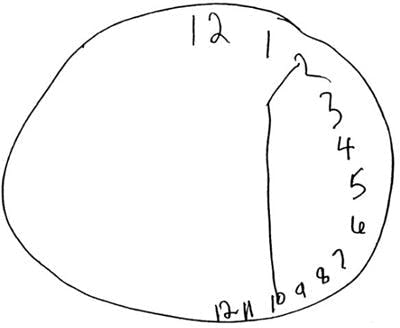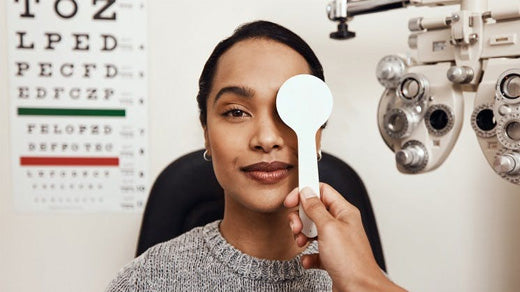Last updated on January 10, 2022
Many survivors with vision problems want to know: can you regain your sight after a stroke? The simple answer is yes. However, it’s important to clarify the difference between eyesight and vision.
Eyesight refers to how well the eyes capture images while vision refers to how the brain processes those images. When a stroke disrupts your sight, vision is typically the issue that is affected.
Fortunately, many survivors can regain their vision, at least partially, with the right approach. Although it was once believed that vision stabilizes around the six month mark post-stroke with no opportunity to improve thereafter, studies and advances in the stroke rehabilitation field have shown that this is simply not true. There is plenty of hope for regaining your sight after a stroke, and this guide will cover everything you need to know.
What Causes Vision Problems After Stroke?
About 60% of survivors sustain vision problems after stroke. For these individuals, it’s important to acknowledge that the eyes are not broken. Instead, the eye-brain connection has sustained damage and requires rehabilitation.
When a stroke affects the brain’s vision center, it can cause issues with the way the brain interprets your eyesight. This is most common after a stroke in the occipital lobe, parietal lobe, brain stem, or cerebellum, which are the primary areas of the brain that contribute to vision.
Generally speaking, there are two ways that a stroke can impair the brain’s ability to process your eyesight. First, a stroke can impact control over the eye muscles, which can cause problems with eye coordination like double vision.
Second, a stroke can impact the brain’s visual processing skills. This means that your eye muscle control is fine, but your vision is impaired because the brain cannot process your eyesight correctly.
One problem impacts neuromuscular control while the other problem impacts visual processing skills. Therefore, regaining sight after stroke involves healing the brain and improving either your neuromuscular control or visual processing skills. This is possible through vision rehabilitation.
Before we dig into the methods, let’s discuss different types of vision problems that can occur after a stroke.
Types of Vision Problems After Stroke
Every stroke is different and therefore every recovery is different. Depending on the area of the brain impacted by stroke, it can result in different types of vision problems.
Here are common types of vision problems after stroke:
1. Central Vision Loss

Central vision loss occurs when a person cannot see the middle of their visual field. This means the individual cannot see what’s directly in front of them but they can still see what’s in their peripheral vision, or the edges of their visual field.
2. Hemianopia

Hemianopia occurs when half of the visual field is missing. This is also known as a “field cut.” Individuals with a left hemianopia cannot see the left side of their visual field (illustrated above) while right hemianopia blocks the right visual field.
3. Quadrantanopia

Quadrantanopia occurs when roughly one-fourth of the visual field is missing. The upper or lower portion of the visual field might be blocked, as illustrated in the photo above.
4. Visual Neglect
There’s another type of vision problem that doesn’t actually impact the person’s ability to process eyesight. Instead, it impacts their attention, and as a result, they may not “see” or notice things in the environment on their affected side. This condition is called visual neglect.
A person with left neglect does not notice the environment on their left side while a person with right neglect (less common) does not notice the environment on their right side. To understand how this can impact a stroke survivor, see the clock shown below:

Image from Journal of Neurology
When asked to fill in the numbers on a clock, a person with left neglect (who cannot notice what’s in the environment on their left side) may fill in the numbers entirely on the right side of the clock.
Visual neglect is different from visual field cuts (hemianopia) in that the former is an attention problem while the latter is a vision problem.
5. Eye Movement Disorders

When a person loses the ability to control their ocular (eye) muscles, it inhibits the ability to control eye movements. This can result in eye movement disorders, which include:
- Nystagmus: rhythmic shaking of the eye(s) side-to-side, up-and-down, or in circular motions
- Strabismus: the eye(s) point different directions, perhaps they both point inwards (cross eyed) or one points outward
- Diplopia: double vision, most commonly caused by strabismus
- Oculomotor dysfunction: eye tracking control issues can make it difficult to look from one thing to another or impair the way you judge distance between objects
- Dry eyes: difficulty with blinking or fully closing the eyelid can result in dry eyes and sometimes blurry vision
Eye movement disorders are not only disorienting to the individual, but it’s disorienting to the brain too. In many cases of strabismus or diplopia, the brain will actively suppress the affected eye to avoid double vision. If left untreated, vision in the affected eye continues to deteriorate. Active rehabilitation is necessary to boost chances of recovery.
Next, you’ll learn what you can do to maximize your chances of regaining vision after stroke.
Treatment: How to Regain Your Sight After a Stroke
Although there are many different types of vision problems after stroke, the solutions have something in common: neuroplasticity.
Neuroplasticity is the brain’s ability to reorganize itself as a result of experience. The brain will attempt to become more efficient at whatever we frequently do. Therefore, by stimulating the brain with visual therapies, vision may improve.
Here are some rehabilitation methods that can help maximize your chances of improving vision after stroke:
- Eye exercises. When the brain cannot process eyesight due to eye movement disorders, eye exercises may help. These exercises, such as alternating your focus between near and far objects, help stimulate the brain and encourage neuroplasticity.
- Limb activation treatment. When visual neglect is involved, it helps to move the affected limbs within the neglected environment (limb activation treatment). For example, an individual with left neglect can practice moving their left arm and leg. As the visual cortex integrates both sensory and motor information together, the stimulation may help improve attention on the neglected side.
- Visual scanning training. For hemianopia and quadrantanopia, visual scanning offers a way to retain the brain and improve these conditions. For example, if you have left neglect, try drawing a line down the left side of a book with a highlighter. Then, practice moving your eyes all the way down a sentence until you reach the highlighter.
- Visual training. This refers to any program of vision-improving exercises, such as eye exercises or visual scanning training, practiced consistently over a prolonged period of time. A good vision training program involves performing these exercises on a frequent if not daily basis to activate neuroplasticity and stimulate positive changes in the brain.
- Compensatory strategies. As survivors participate in vision therapy, they are also encouraged to find compensatory strategies such as glasses with prisms that compensate for double vision. Although compensation does not encourage recovery, these techniques can be necessary for boosting your safety and self-efficacy with the activities of daily living.
A neuro-optometrist can be a key player during your vision recovery process. Unlike standard optometrists, neuro-optometrists focus specifically on vision problems that stem from brain disorders such as a stroke.
These experts can diagnose vision problems and recommend a course of action. You can find vision therapists under the practice of “neuro-optometric vision rehabilitation.”
How Long Does It Take to Get Your Vision Back After a Stroke?
Generally speaking, some survivors see small improvements in their vision within three months after stroke. Furthermore, immediately after a stroke, spontaneous recovery is likely to occur. This means that some secondary effects like vision problems may improve on their own.
However, spontaneous recovery should not be relied upon for improvement. Instead, you can maximize your chances of regaining your sight after stroke by actively participating in vision rehabilitation on a consistent basis.
A recent 2021 study found that hemianopia improved when survivors participated in visual training over several months. The study’s senior author, Krystel Huxlin, Ph.D., Director of Research at URMC’s Flaum Eye Institute, mentioned:
“Any patient – regardless of age, blind field size, or how long ago they had a stroke – could have meaningful improvements in sight in about three months if they train twice day, for 30 minutes each time.”
She also recommends that survivors continue to train for as long as they continue to improve. After all, neuroplasticity takes place throughout an individual’s entire life. Even if a survivor has paused rehabilitation for many years, they can often continue to recover if they pick therapy back up with consistency.
Key Points: Regaining Sight After Stroke
Vision problems are a common outcome of a stroke, particularly if the occipital or parietal lobe has been affected. Some changes in vision include double vision or field cuts; and some changes don’t affect eyesight at all — instead, attention that has been affected.
Fortunately, changes in vision or attention can improve on their own due to spontaneous recovery. However, survivors that want to regain as much sight as possible should participate in a vision training for at least several months.
Although vision improvement can be slow, the brain is capable of improving no matter how long it has been since your stroke. Pursue a vision training program on a consistent basis to see what’s possible.

